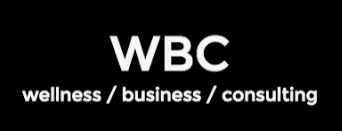“As someone who has invested lots of time and energy in the online “how to be a better small business owner” sphere, this book has seriously impressed me. In most areas the author gives actionable advice with the understanding that, as an educated reader, I will be able to figure out the details. That being the case, I also appreciated the parts where she gave her specific scripts to deal with various scenarios.”
“Wow! This book was seriously helpful. A lot of great tips that I would have never thought of in a million years. I highly recommend reading this book if you have your own massage practice or are thinking of taking the leap.”
“Great read! Loved it, the author seemed warm and welcoming; easy and encouraging read exactly what I want in a business book!”
“This book is a treasure. Rachel is a unique and authentic voice in our industry. Not gonna lie. I first picked up this book and was like...Here we go, another obnoxious MT tryna' tell me they're so amazing. BUT...joke's on me. This is beautifully written. So much love and consideration for professionals in this field. Rachel, I'm so thankful for sharing your experience. This will help so many who trying to make a breakthrough! Gracias!”
“Wow! I just finished your book! Huge, huge thank you! I've been a therapist for over 10 years now and I quite honestly have had a journey with it! Three years ago I took a huge step and opened a spa inside a hotel. Awesome right? Wrong. Hotel charged an insane rent- I underestimated the hiring process. Made huge boss mistakes that i can now see where my train wreck started, with your book. I did the unheard of average of 45-52 massages a week! Worked over 80-90hrs a week ti attempt all the hats it took to run. Never delegated- never set better boundaries- and after reading this I now realize how i never even tried to problem solve that.
I just ran myself to the point i got sick- shingles at the age of 37 and a heart attack warning before i turn forty! Yikes. What i want to get at, is if there are any therapists out there on the same destructive path- i hope they get the chance to stop and read before its too late. I’m now running a successful private office, for now and preparing for a better growth. Thank you for a great guide book!”
“In a nutshell, this book is everything the author learned from in-depth personal study, experience and interviews with successful massage therapists. Her call to action and improvement is very inspirational and empowering. I was blown away by the value of information generously shared on every page. A very interesting, fun and easy read with most relevant tips, including the current COVID situation. Highly recommend.”
“Rachel Beider's journey is a motivating example for any entrepreneur with an interest in starting from scratch and building a successful practice from the ground up. She shares how she overcame a number of personal and professional obstacles to create a multi-million dollar massage and wellness business in New York City. Her strategies for sales and marketing are top-notch, and she describes in detail how she uses technology to attract and retain customers. I loved how she wrote about getting out of your own way, and being a force for good. I will be recommending this book to all of my friends who are entrepreneurs, business owners, and dreamers. It's worth reading even if you're not in the wellness industry. She's an inspiration!”
“I loved reading this book. Rachel was very authentic and eager to share her journey of opening a business and growing it successfully. She shared do’s and don’ts of running a successful massage practice. She gave step by step advice for accounting, accountability, marketing tips, delegation, getting help, and more. If you are a business of one and want to grow your business or make it more professional, then this is the number one book to read.”
If you’re interested in reading it, it’s available on Amazon Kindle and in Paperback, here.










